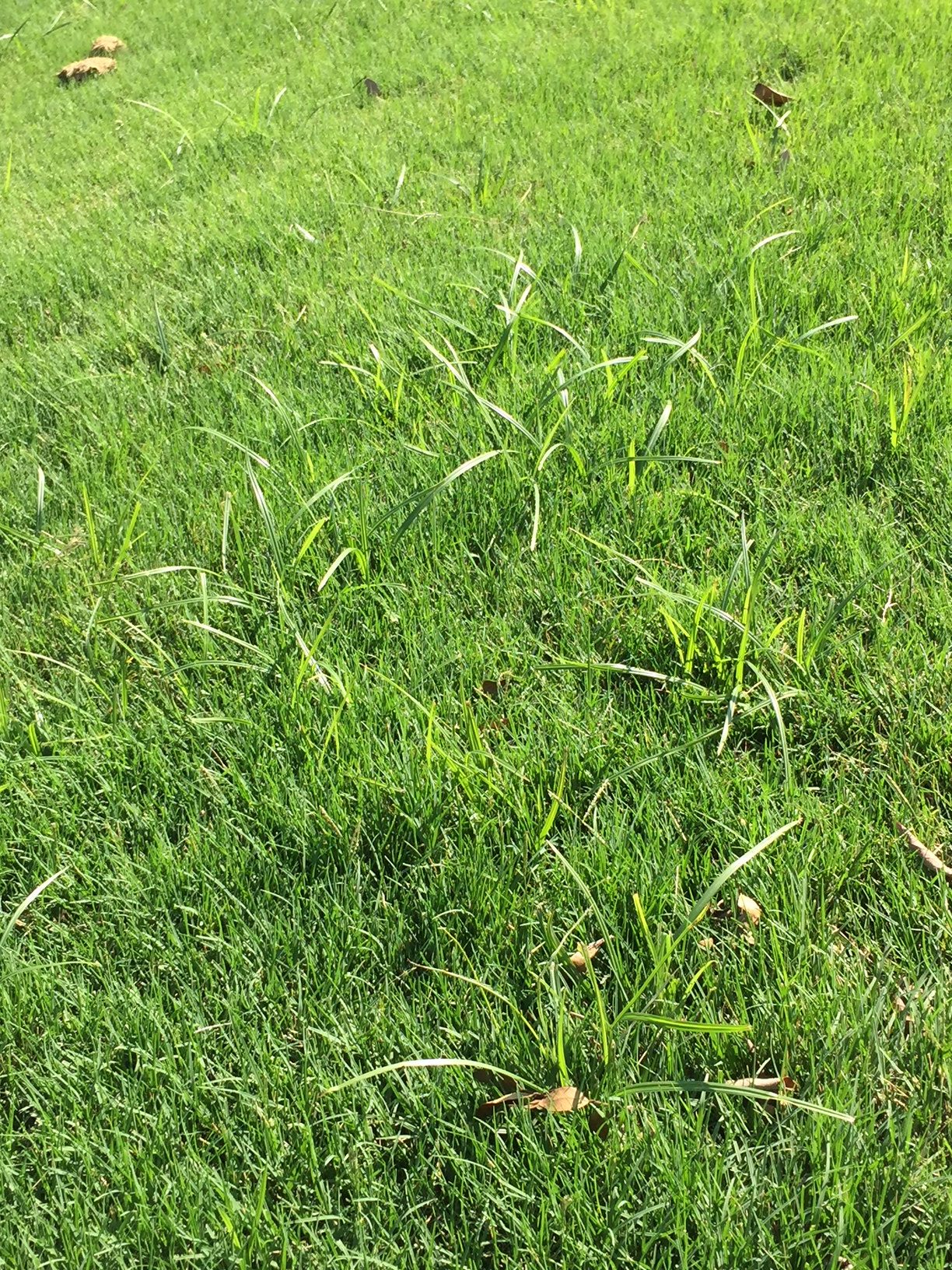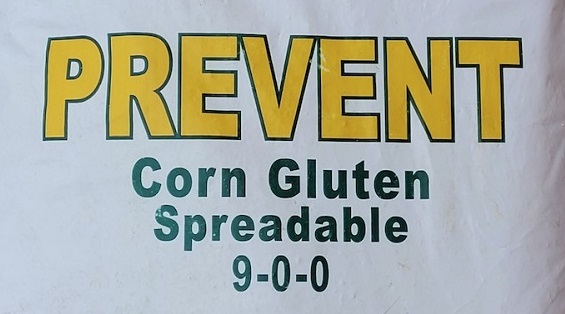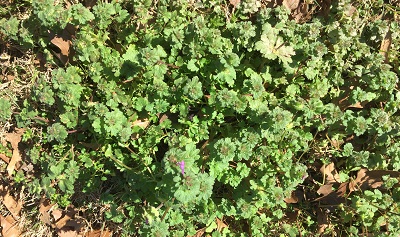Weed and Feed?
Weed and Feed is most often the combination of a fertilizer with a selective post-emergent herbicide. I will not be addressing the use of a weed and feed product combining fertilizer and pre-emergent herbicide here, as this is not the harmful product that is usually applied to lawns in the spring.
So, why are post-emergent Weed and Feed products not recommended for use on lawns in Central Texas?
It’s simple, really.
Timing
Spring application of fertilizer should not take place at the same time as post-emergent application of a selective broadleaf herbicide in Central Texas. The timing is off when both are applied at the same time.
Spring fertilization of lawns should take place after new growth has begun in the spring, preferably after it has been mowed 2-3 times. Organic products, which require microorganisms to break them down to a usable form, may be applied a little earlier.
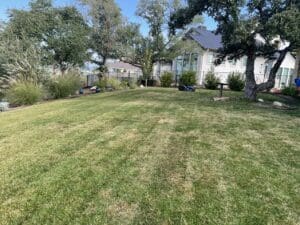
Post-emergent herbicides which are applied in early spring as the lawn is emerging will harm the newly emerging growth, causing the lawn to turn temporarily yellow. This weakens the lawn and may pre-dispose the lawn to diseases such as Take All Root Rot.
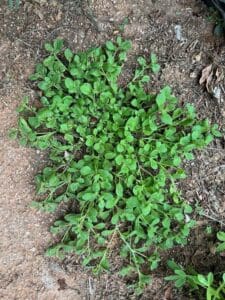
Addressing weeds at the early stage of their growth with spot treatments of a label-recommended post-emergent herbicide is more effective than broadcast treatment. Broadcast treatments can also lead to resistance to herbicides.
The Khaki weed at the left is very young and is in the perfect stage to address with a spot treatment of a selective or non-selective post-emergent herbicide. When weeds mature and bloom they do not respond to herbicides as well as when they are young.
Improper product for Central Texas lawns
Many post-emergent weed and feed products contain up to 30% Nitrogen. High nitrogen forces out a lot of vegetative growth that our drought-affected root systems cannot support. A slow release, organic form of Nitrogen such as MicroLife 6-2-4 or MicroLife 8-4-6 would be a more appropriate product for our area. MicroLife also contains products such as beneficial microorganisms and mycorrhizal fungi which assist the roots with the uptake of water and nutrients.
Excessive amounts of post-emergent herbicide broadcast over the entire lawn are are less effective than targeted treatments. Learning which products control specific weeds and the proper timing of spot applications is much more effective in weed control. Not all weeds can be controlled with the same herbicide.
Harmful effect on tree roots and other plant roots
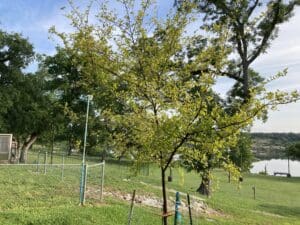
Post-emergent herbicides affect broadleaf plants. Trees are broadleaf plants. Application of a granular post-emergent herbicide like weed and feed under the canopy of trees will harm tree roots. Trust me, our tree roots are already weakened from the past few years of drought and do not need any additional stress.
The Elm tree at left was affected by the application of a weed and feed product applied to the lawn under and around it. It will likely recover, but may be weakened and susceptible to secondary invaders such as borers.
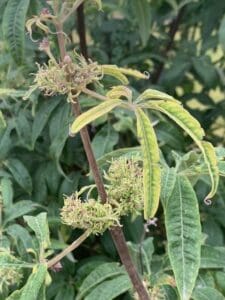
When using a “broadcast-type” spreader to apply a post-emergent weed and feed product, the product will often sling into beds adjacent to the lawn. Herbicide damage symptoms are soon evident and the plant may or may not recover.
Symptoms shown are of a Vitex tree with roots damaged by application of a weed and feed product that was slung into the bed it was planted in by a broadcast-type spreader.
Environmental concerns
Excessive use of herbicide runoff contaminates local water sources.
Post-emergent herbicides can harm beneficial insects and pollinators such as bees and butterflies.
We are happy to help with recommendations for weed control in your lawn. Please understand that the best weed control is to provide the lawn with what it needs to be healthy and able to crowd out the weeds. A healthy lawn will not have weeds. Recent drought conditions have stressed our lawns, and this is why we have so many weeds. You might consider reducing the size of your lawn to make your water use more efficient and to reduce the need for harmful chemicals.

